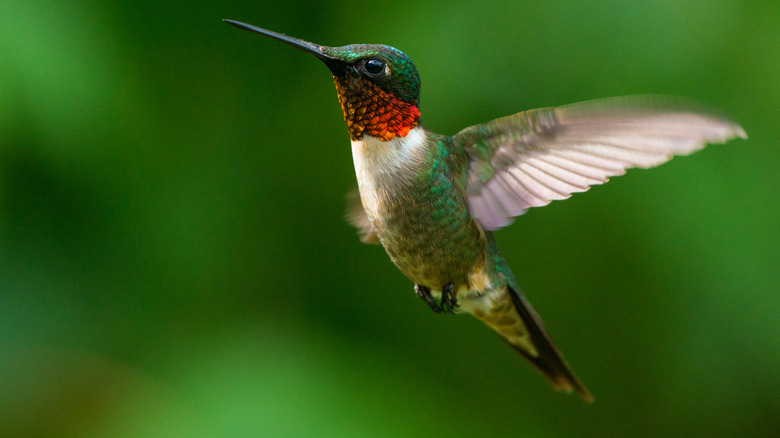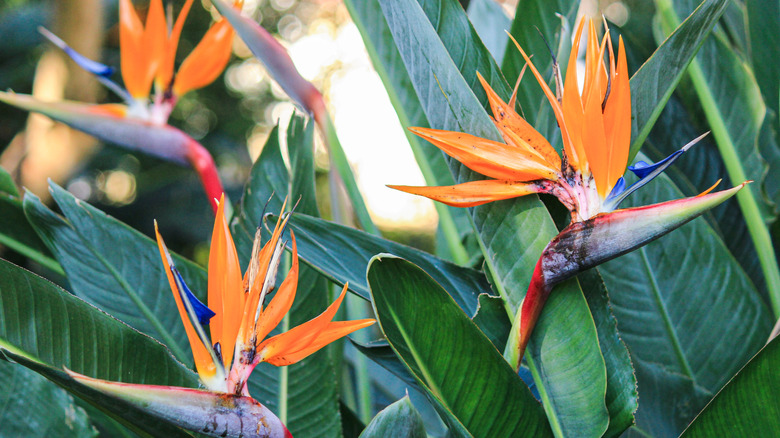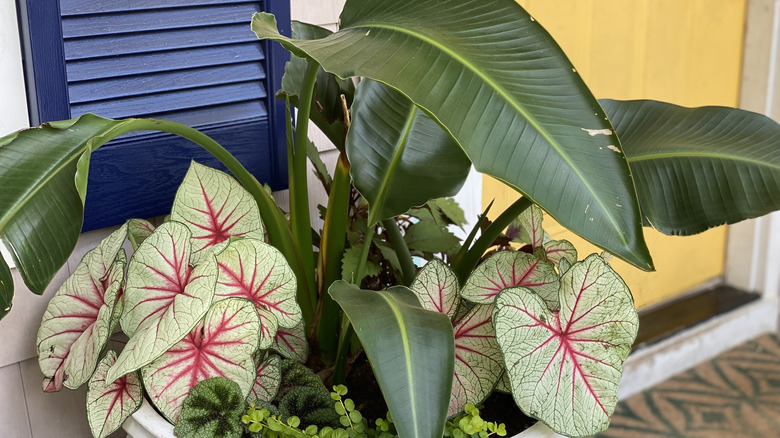This Bird-Like Flower Attracts Hummingbirds (But You Need To Be Cautious)
Considering the speedy little birds' beauty and ability to control mosquitoes and other insects, there are a lot of good reasons to grow plants that can attract hummingbirds to your yard. If those plants can also give your garden a tropical vibe, then that's even better. The bird of paradise flower (Strelitzia reginae), can do all this and more, but because it is also toxic, it is important to use caution when landscaping with birds of paradise if you have pets or young children.
Native to South Africa, bird of paradise flowers are usually hardy in USDA zones 10 and higher but can also overwinter in colder zones if they are given some protection. While The North Carolina Extension Gardener considers birds of paradise to only have low severity poison, it does note that they can cause drowsiness and gastrointestinal symptoms in people and can also be a problem for cats, dogs, and horses if ingested. Another important thing to keep in mind if you're considering buying a bird of paradise is that there are many different plants that have that common name. The Louisiana State University School of Veterinary Medicine points out that Caesalpinia gilliesii, another shrub with the common name bird of paradise, is significantly more toxic. It is also invasive, unlike Strelitzia reginae.
Growing bird of paradise flowers
It's no surprise that bird of paradise flowers appeal to hummingbirds, considering their shape. Hummingbirds probably don't notice that birds of paradise are shaped like birds themselves. Instead, hummingbirds delight in the plant's tubular flowers and are drawn in by the red and orange hues. The flowers also provide the little birds with plenty of nectar, giving them the energy they need to keep your garden free of mosquitoes and other pests.
If you've decided that a bird of paradise plant would make a good addition to your yard, you shouldn't have any trouble finding a young plant at local garden centers. The plants also divide well, so you may be able to get a bird of paradise for free if you have any friends or family that are ready to divide theirs. Be sure to plant your new bird of paradise in a location where it receives part shade and has fertile and well draining soil.
Using bird of paradise flowers in gardens and containers
Gardeners in zones 10 and higher can easily combine bird of paradise flowers with other hummingbird favorites like salvia, butterfly milkweed, and coral bean, which are all also hardy in those zones. Another option is to pair the plants with low growing annuals to ensure the birds of paradise are the stars of the show and not competing for attention. These annuals can both act as a living mulch and attract pollinators. Petunias, nasturtiums, and zinnias are all excellent for attracting hummingbirds. Additionally, consider growing your bird of paradise in a container and placing it on a ledge, pillar, or other space where it is accessible to hummingbirds but not pets or children, if its toxicity is a concern.
Growing in containers is an especially good option for gardeners in colder zones. Not only does this allow the plants to be easily kept out of reach of children or pets, but it ensures the flowers can be moved to more protected locations, or even treated as houseplants, during winter months. Luckily, a bird of paradise is a good plant for indoors, so it can easily live inside your house for a few months as long as you don't have any pets or young children who could get into it. Then, once outdoor temperatures are consistently 55 degrees Fahrenheit or above, you can harden your plant off and bring it back outside for the hummingbirds to enjoy for another summer.


